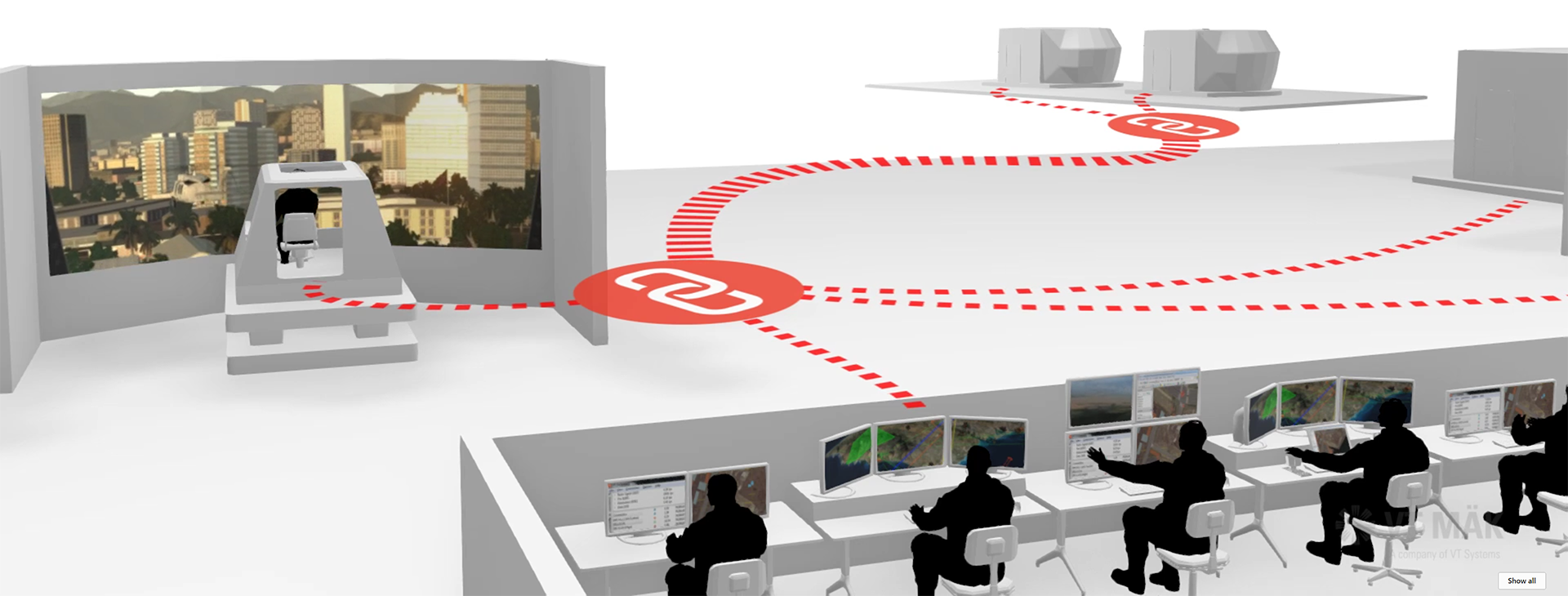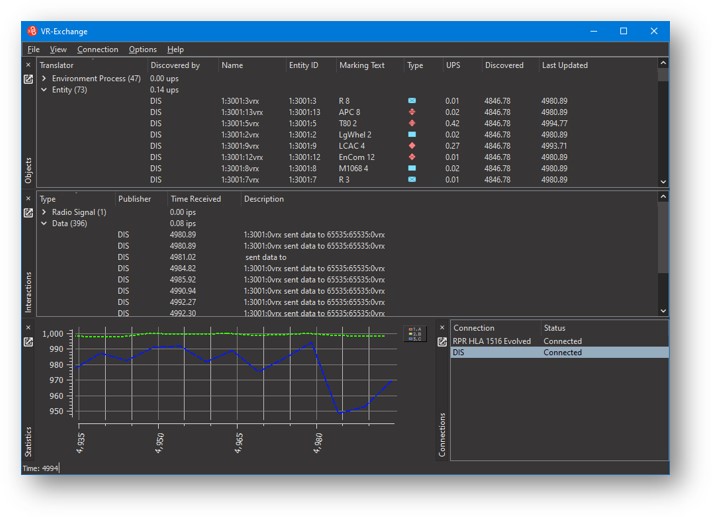Seamless integration of simulations is critical for modern defence training and mission planning. Solutions like VR-Link and MAK RTI enable interoperability between different simulation platforms, ensuring real-time data exchange across systems. VR-Exchange facilitates communication between legacy and modern simulation frameworks, while WebLVC enables web-based access to distributed simulations. These technologies create a unified training environment where forces can collaborate, test scenarios, and analyze battlefield strategies effectively. By connecting every simulation, defence organizations achieve better coordination, improved situational awareness, and enhanced mission preparedness.
Benefits
Seamless Interoperability
VR-Link and MAK RTI ensure different simulation platforms communicate efficiently, enabling cohesive and synchronized training environments.
Enhanced Collaboration
VR-Exchange bridges legacy and modern systems, allowing diverse teams and units to train together in a unified virtual space.
Scalability & Remote Access
WebLVC enables web-based simulation access, allowing defence personnel to participate from different locations without complex setups.
Improved Real-Time Decision-Making
A connected simulation network provides accurate data exchange, enhancing situational awareness and mission planning effectiveness.
What We Offer?

VR-Link is the glue that holds Synthetic Environments together. The toolkit provides an easy way to network simulators and other virtual reality applications. It uses a protocol independent API that abstracts away specific networking details and provides your software with support for industry standard High-Level Architecture (HLA) and the Distributed Interactive Simulation (DIS) protocols.

MAK RTI is a solution that enables High Level Architecture (HLA) federates to rapidly and efficiently communicate. It is chosen for both large and small federations because of its performance, support for a wide variety of network architectures, easy-to-use configuration GUI, range of supported platforms, and successful track record.

VR-Exchange is MAK’s universal translator for distributed simulations. It performs FOM-to-FOM translation, RTI-to-RTI bridging, DIS or HLA-to-TENA translation, and can support simulationto-C4I interoperability. VR-Exchange’s open architecture helps to develop custom brokers for C4I protocols or other data standards.

The MAK WebLVC Server connects web-based simulation federates to DIS/HLA federations using the WebLVC protocol. It enables highly interactive, low-latency, real-time applications to run in thin-client environments such as web browsers, tablets, or smartphones.
Connecting Every Simulation with Network Infrastructure
Connect all simulations with a unified network infrastructure for seamless data flow.




